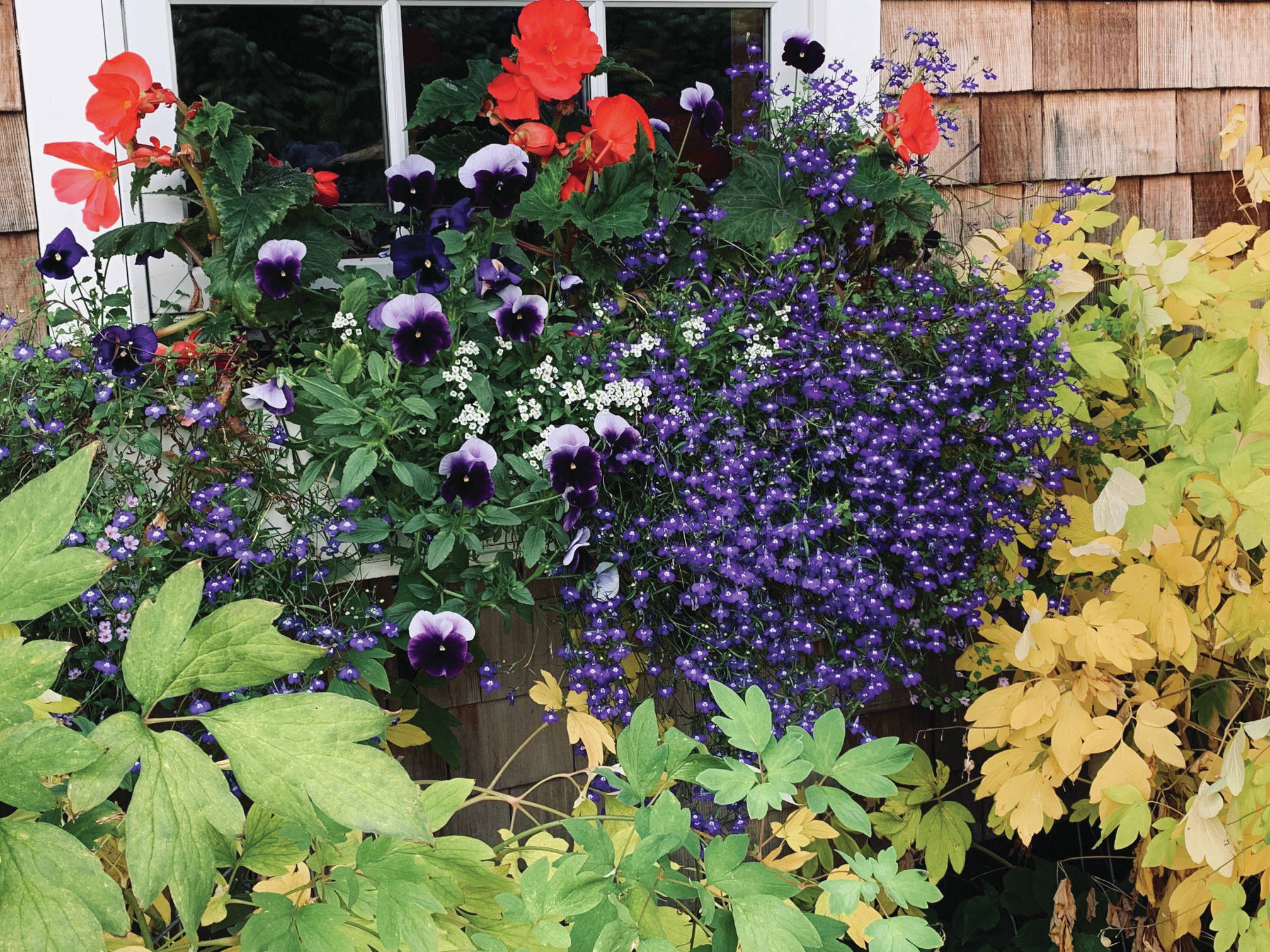Now that the harvest season is winding down, I have more time to actually cook with what I’ve grown. I know that sounds strange — all summer long there is such abundance but so little time. My energy goes into the production and meals are a quick affair. So here I am with a plethora of leeks and potatoes and, for the very first time in my life, I made potato leek soup. From such humble ingredients comes a lovely meal.
We are still waiting for the temperature to drop enough that we can store our produce in the makeshift root cellar. We have a very large cooler that really belongs on the boat but doubles as storage for carrots, beets and red cabbage. But to keep the whole affair cool enough I swap out frozen Kool-Pacs once a day. You can imagine how that can go wrong. In the meantime, everything stays in the ground. There are those of you who leave root crops in situ all winter, providing lots and lots of mulch including blankets. Not for me. I want immediate access — thus the cooler right outside the door. For heat we will use the propagation mat that I use for starting seedlings in the spring; it’s nice to have a tool with an unintended dual purpose. In the meantime we eat well.
Still harvesting chard, on the fourth cutting and we aren’t even tired of it. But it wants to call it quits and is going to seed so as I harvest I’m pulling the plant, thanking it for its productivity and then tossing it on the compost.
Oh no, that brings me to compost. If you are a regular reader of this column you will recall my rants about never ever again writing about compost. Here I am, throwing myself into the breach. Why? Because it’s stupid of you not to toss your garden waste into a pile and call it good. If you do nothing more than that you will have compost in a couple of years to add back into your garden. What more can I do to convince you? Humans have been composting since they started farming. Millennium.
The late Toby Tyler saved up his kitchen scraps, added them to the garden waste and then just randomly dug holes in his vegetable plot and tossed in the bucket. As each bucket filled it went into the ground. How easy is that?
You don’t even need a bin — just make a pile. John has taken over the composting operation here and he just makes a pile, adding new material at one end while I take out the finished product at the other end. Its about a 3-year rotation. It works. The greenhouse bins are filled with our own compost each fall so it’s ready for action in the spring.
You don’t need to buy plastic bags full of commercially produced compost. Please people, make your own compost.
Are you planning on planting garlic this fall? It is so very easy and so delicious; you won’t be sorry. Think about this, but not much longer, because you want it in the ground before it freezes. There are a zillion different kinds out there and I think I have tried half of them, at least. But Inchelium Red has proven to be the most faithful so I stick with it. You can even use what’s in the grocery store. I’ve done it and it works. Not very imaginative, but you’ll get garlic. Fall planted cloves will produce a larger bulb than spring planted. Depending on your elevation (high) you either need to mulch like your life depends on it or, here at 396 feet, not at all. Either way, home grown garlic is worth it.
Be on the lookout for ornamental bulbs, too. I love the minors (short) because it doesn’t take forever to hide the spent foliage of the larger bulbs.
Because our weather has been so interesting this season it might be hard to be thinking about planting bulbs, but, come what may, you need to be prepared.
I’ve been thinking about one of my favorite annuals: godetia. It used to be a late bloomer but this year it broke out in bloom, sang its song and left the stage “tout suite.” Not only was that a disappointment, but its major shortcoming was baldly apparent: it has zero resilience to the vagaries of weather, canines or humans. Which is to say: they break with little or no provocation. There they lay, in the dirt, in full bloom, dashed glory. I’m over them. This may seem harsh but the California poppies are so very glorious and filling in the void so successfully that they have won my heart. Next year there will be more of them. They come in some gorgeous colors.
Late color in the perennial beds is being provided by cosmos, the afore mentioned poppies and astrantia blooming a second time. Thus, there is a need for more fall color. Something to think about for next year.
The roses all over town are blooming AND setting magnificent hips; pause to appreciate them.
Rosemary Fitzpatrick is a longtime Homer gardener and has been writing Kachemak Gardener since 1990.


